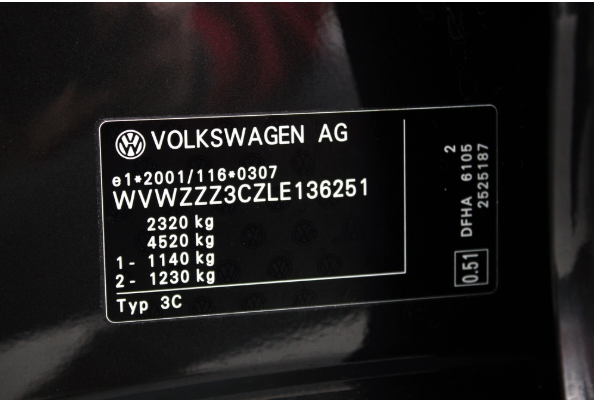A Vehicle Identification Number (VIN) is your car’s fingerprint—totally unique and filled with important details. If you’re looking at a used car, cracking the VIN code can tell you its story, like accidents, recalls, and any title problems.
What is a VIN and Why Does it Matter?
A Vehicle Identification Number (VIN) is a unique 17-character code given to every vehicle when it’s made. Think of it as the car’s fingerprint, holding key info like its make, model, year, production details, and where it’s from.
Transparency in Used Car Sales
Buyers can access a vehicle’s complete history so they aren’t blindsided by hidden accidents, odometer fraud, or title issues
1)Theft Prevention and Recovery
Law enforcement uses the VIN to trace stolen vehicles
2)Recall Management
Automakers rely on VINs to notify owners about recalls and critical safety issues
3)Insurance and Legal Requirements
VINs are mandatory for registration, insurance policies, and resolving claims
4)Digital Integration
With modern systems, VINs enable precise tracking of a vehicle’s specifications for software updates, repairs, and part compatibility
5)Connected Services
Many vehicles are linked to apps and telematics systems through their VINs to remote start, tracking, and diagnostics
6)Fraud Prevention
A VIN helps buyers and authorities detect cloned or counterfeit vehicles
How to Locate the VIN on Your Car
The VIN can typically be found in several locations on your car:

1) Dashboard: Look at the base of the windshield on the driver’s side. The VIN is often visible through the glass.
2) Driver’s Side Door Frame: Open the driver’s door and check the door frame or the edge of the door for a sticker or plate with the VIN.
3) Vehicle Documents: The VIN is also listed on documents like the vehicle title, registration, insurance card, or owner’s manual.
4) Under the Hood: Some vehicles have the VIN stamped on the engine block or near the radiator support.
5) Chassis or Frame: For older or specialty vehicles, the VIN may be stamped on your car’s chassis or frame.
Breaking Down the VIN
The VIN breaks down into three main parts: the World Manufacturer Identifier (WMI), Vehicle Descriptor Section (VDS), and Vehicle Identifier Section (VIS). Each section reveals something important about the vehicle’s origin, features, and one-of-a-kind identity.
1. World Manufacturer Identifier (WMI)
Characters 1-3: Identify the vehicle’s manufacturer and the country of origin
Example: “1” = USA, “J” = Japan, “W” = Germany.
2. Vehicle Descriptor Section (VDS)
Characters 4-8: Provide information about the vehicle model, body style, engine type, and transmission
3. Check Digit
Character 9: A security code used to verify the VIN’s validity
4. Vehicle Identifier Section (VIS)
Characters 10-17: Offer specific details, including:
10th Character: Model year (e.g., “A” = 1980, “Y” = 2000, “1” = 2001)
11th Character: Assembly plant location
Characters 12-17: Serial number unique to the vehicle
Example VIN: 1HGCM82633A123456
1HG: Honda, USA
CM826: Accord, sedan, 2.4L engine
3: Check digit
3: 2003 model year
A: Assembly plant in Marysville, Ohio
123456: Vehicle serial number
Using Online Tools to Decode a VIN
With free and paid services available, you can decode a VIN in minutes. Explore trusted platforms like AutoCheck and the National Highway Traffic Safety Administration (NHTSA) to uncover important information about a vehicle’s past.
NOTE: Some tools provide additional services, like full vehicle history reports or theft checks, for a small fee.
Red Flags to Watch for in a VIN Report
VIN history reports can uncover major problems like salvage titles, odometer rollbacks, and open recalls. Know what to watch for and how to spot red flags that might help you avoid a bad deal.
1. Accident History
Severe accidents, especially those involving frame or structural damage, can compromise safety and resale value
2. Title Issues
Look for terms like “Salvage,” “Rebuilt,” or “Flood Damage,” that show the vehicle has been deemed a total loss or severely damaged
3. Odometer Discrepancies
Mismatched or inconsistent mileage readings could suggest odometer tampering
4. Multiple Ownership Transfers
Frequent ownership changes in a short period might signal hidden problems or dissatisfaction
5. Open Recalls
Check for unresolved recalls that could pose safety risks
6. Stolen Vehicle Status
Ensure the vehicle is not listed as stolen to avoid legal troubles
7. Lien Information
A vehicle with an active lien might mean the seller doesn’t fully own it
8. Flood or Fire Damage
Vehicles exposed to floods or fires may have lingering mechanical or electrical issues
9. Improper VIN
A VIN that doesn’t match the vehicle or shows tampering could indicate fraud
10. Service Gaps
Missing maintenance records or long gaps in service history can suggest neglect
Conclusion
In the end, knowing a vehicle’s VIN is key to making smart choices when buying a used car. It gives you a full picture of the car’s history, from past accidents to recalls or legal issues. Always take a moment to check the VIN carefully so that you’re getting a safe and reliable ride.